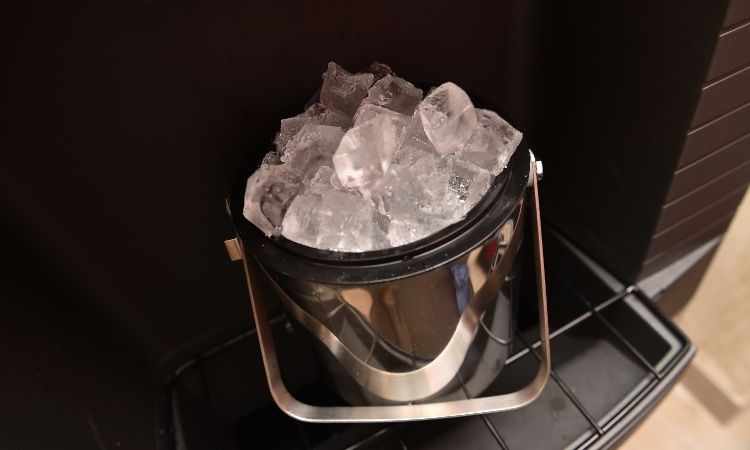
The global ice maker market is experiencing robust growth as demand rises across commercial, industrial, and residential sectors. Ice makers, once considered a luxury appliance, are now essential in restaurants, hotels, healthcare, fisheries, and even homes. Their role in maintaining food safety, preserving perishable items, and enhancing customer experiences in the hospitality and food & beverage industries makes them indispensable.
The global ice maker market was valued at USD 5.85 Billion in 2024 and is projected to grow at a CAGR of 5.90% during 2025–2034, reaching an estimated USD 10.38 Billion by 2034. This growth reflects increasing industrial and commercial demand, technological innovations, and rising consumer adoption of residential ice-making appliances.
Market Definition and Scope
Ice makers are devices designed to produce ice in various shapes and sizes, including cubes, flakes, tubes, and nuggets. The market encompasses a wide range of applications: commercial setups such as hotels and restaurants, industrial use in fisheries and pharmaceuticals, and residential kitchens and home bars.
The market scope includes segmentation by product type, end-use, distribution channel, and geography, providing a comprehensive view of global demand, growth patterns, and emerging opportunities.
Market Segmentation
By Product Type
Cube Ice Makers dominate commercial and hospitality sectors due to their versatility, convenience, and aesthetic appeal for beverages. They are widely used in hotels, bars, and restaurants.
Flake Ice Makers are essential in healthcare, food processing, and industrial applications. Their soft and moldable ice is ideal for preserving delicate items such as seafood or biological samples.
Tube Ice Makers are gaining popularity in supermarkets, beverage processing, and logistics due to uniform size, slow melting properties, and ease of storage.
Other Ice Makers, including nugget, pellet, and portable devices, are witnessing growing demand for specialized applications and home convenience. The variety in product types ensures that the market caters to both large-scale industrial needs and small-scale residential preferences.
By End Use
Commercial Use remains the largest segment of the ice maker market, driven by hotels, restaurants, bars, and cafes. The growth in hospitality, tourism, and quick-service restaurants fuels consistent demand for reliable ice-making solutions.
Industrial Use is a critical driver for flake and tube ice makers. Industries like fisheries, food processing, chemical manufacturing, and pharmaceuticals depend on ice for storage, cooling, and production processes.
Residential Use is expanding due to rising disposable income, urbanization, and the increasing popularity of home bars and kitchen appliances. Energy-efficient and compact ice makers are becoming more accessible to consumers, boosting household adoption globally.
By Distribution Channel
Retail Stores, including supermarkets and electronics outlets, continue to be a major sales channel, offering both budget-friendly and premium ice maker options.
Online Sales are rapidly growing as e-commerce platforms provide convenience, product variety, and competitive pricing. Consumers increasingly prefer shopping online for technical specifications, installation guidance, and home delivery.
Wholesale and Distribution Channels cater to B2B clients, supplying large-scale ice makers to hotels, hospitals, and industrial facilities. These channels ensure that commercial and industrial demand is efficiently met.
By Geography
North America remains a mature market driven by strong hospitality and healthcare sectors. Energy efficiency and advanced appliance standards are also encouraging the adoption of modern ice-making technologies.
Europe sees steady demand, with countries like Germany, France, and the UK leading in technological adoption, energy efficiency, and eco-friendly appliances.
Asia-Pacific is expected to witness the fastest growth due to urbanization, the expanding food & beverage industry, and increasing disposable incomes in countries like China, India, and Japan.
Middle East & Africa represents an emerging market with growth opportunities in commercial ice makers for hotels, restaurants, and large-scale food processing.
Latin America is gradually expanding, with rising tourism and hospitality sectors driving commercial ice maker demand.
Market Dynamics
Key Drivers
Several factors are propelling the global ice maker market:
Hospitality and Food & Beverage Expansion: Hotels, restaurants, and quick-service outlets require reliable ice supply.
Technological Innovation: Smart, energy-efficient ice makers with automated controls are transforming the market.
Industrial Requirements: Fisheries, pharmaceuticals, and chemical industries demand specialized ice types such as flake and tube ice.
Residential Growth: Rising disposable income and urban lifestyle trends encourage the adoption of home ice makers.
Restraints
High upfront cost and maintenance of commercial and industrial ice makers.
Environmental concerns related to energy consumption and refrigerants.
Market saturation in mature regions such as North America and Europe.
Opportunities
Development of energy-efficient and eco-friendly ice-making solutions.
Integration of smart technology and IoT-enabled ice makers.
Expansion in emerging markets in Asia-Pacific, Middle East, and Africa.
SWOT Analysis
Strengths: Global demand across multiple sectors, technological advancements, diverse product offerings.
Weaknesses: High energy consumption, maintenance requirements, and reliance on refrigerants.
Opportunities: Growth in smart and eco-friendly appliances, emerging markets, residential adoption.
Threats: Competitive pricing, global economic fluctuations, and regulatory changes.
Competitive Landscape
The ice maker market features several global and regional players focusing on product innovation, energy efficiency, and market expansion. Leading brands emphasize technological differentiation, energy-saving features, and tailored solutions for commercial, industrial, and residential customers.
Startups and emerging players are introducing innovative products such as compact, portable, and IoT-enabled ice makers to capture niche market segments. Strategic partnerships and regional expansions remain critical strategies for competitive advantage.
Market Outlook 2025-2034
The global ice maker market is on a strong growth trajectory, expanding from USD 5.85 Billion in 2024 to USD 10.38 Billion by 2034 at a CAGR of 5.90%. Growth will be fueled by increasing hospitality and foodservice sectors, industrial applications, and residential adoption of smart appliances.
LED energy-efficient and smart ice-making technologies will dominate future trends. Emerging markets, particularly in Asia-Pacific and the Middle East, will present the most significant opportunities due to urbanization, rising disposable incomes, and infrastructural growth.
Key Takeaways
Commercial and industrial segments will continue to drive market growth.
Technological innovation and energy efficiency are shaping the competitive landscape.
Residential adoption of compact and smart ice makers is expanding globally.
Asia-Pacific and emerging markets will provide the largest growth opportunities.
Sustainability and environmental concerns will influence product design and adoption.















Write a comment ...